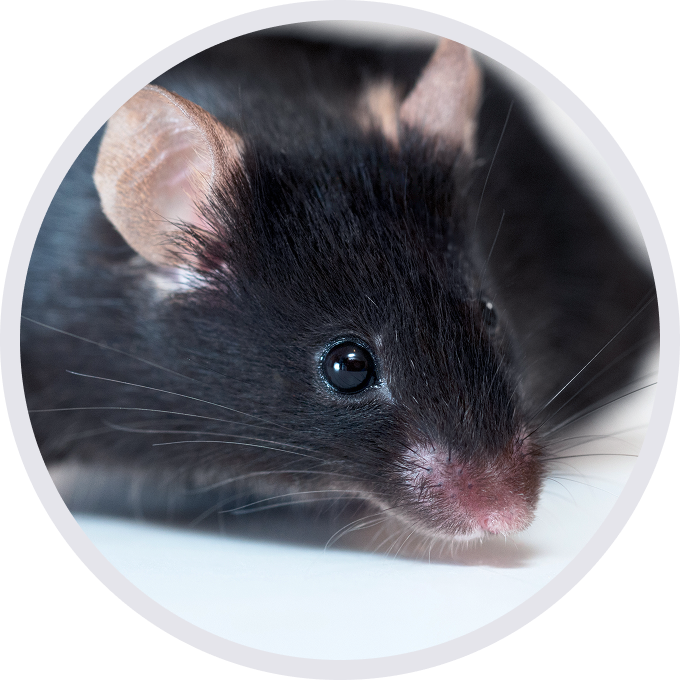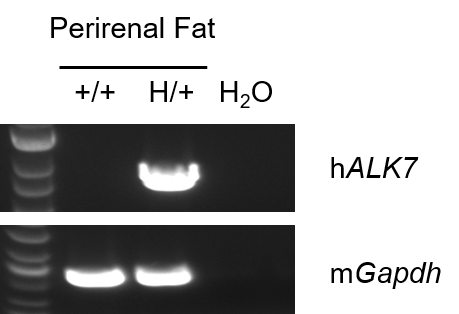
C57BL/6JNifdc-Acvr1ctm2(ACVR1C)Bcgen/Bcgen • 114181
Gene targeting strategy for B-hALK7 mice. The part of exon 2 to exon 9 of mouse Acvr1c gene that encode the whole molecule including 3’UTR, are replaced by human full coding sequence (CDS) and human 3’UTR in B-hALK7 mice. The promoter and 5’UTR region of the mouse gene are retained. The human ACVR1C expression is driven by the endogenous mouse Acvr1c promoter, while mouse Acvr1c gene transcription and translation will be disrupted.

Strain specific analysis of ALK7 mRNA expression in wild-type C57BL/6JNifdc mice and B-hALK7 mice by RT-PCR. Perirenal fat RNA was isolated from wild-type C57BL/6JNifdc mice (+/+) and heterozygous B-hALK7 mice (H/+), then cDNA libraries were synthesized by reverse transcription, followed by RT-PCR with human ACVR1C primers. Human ACVR1C mRNA was exclusively detectable in B-hALK7 mice but not in wild-type mice.

Strain specific analysis of ACVR1C mRNA expression in wild-type C57BL/6JNifdc mice and B-hALK7 mice by RT-qPCR. Perirenal fat, Perigonadal fat, Inguinal subcutaneous fat, and Brown fat RNA were isolated from wild-type C57BL/6JNifdc mice (+/+) and homozygous B-hALK7 mice (H/H), then cDNA libraries were synthesized by reverse transcription, followed by RT-qPCR with mouse or human ACVR1C primers. Human ACVR1C mRNA was exclusively detectable in B-hALK7 mice but not in wild-type mice. Mouse Acvr1c mRNA was exclusively detectable in wild-type mice but not in B-hALK7 mice.
Note: The male perirenal fat was not collected.

The inhibitory efficiency of the nucleic acid drugs against human ACVR1C in heterozygous B-hALK7 mice. B-hALK7 mice (H/+) were randomly divided into two groups (Male, 10 weeks old, n=5). The human ACVR1C targeted nucleic acid drugs (synthesized according to patents) and PBS were administered to the mice individually. The nucleic acid drug was administered in the form of PBS aqueous solution. The mice were sacrificed on day 14, and the adipose tissue was collected to detect the expression level of human ACVR1C mRNA by qPCR. (A) The schematic diagram of experimental processing. (B) The expression of human ACVR1C mRNA in the adipose tissues. Significance was determined by t-test, *P<0.05, **P<0.01, ***P<0.001. Values are expressed as mean ± SEM.